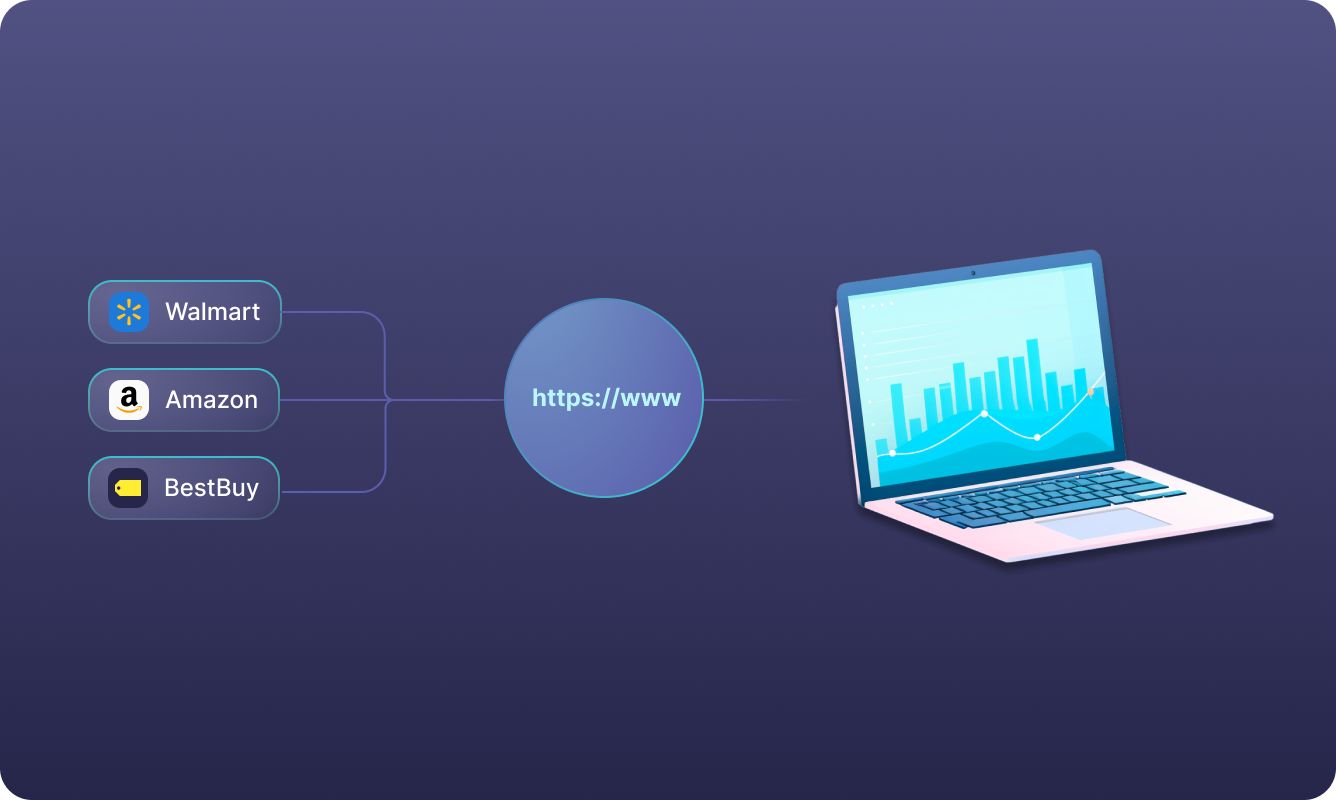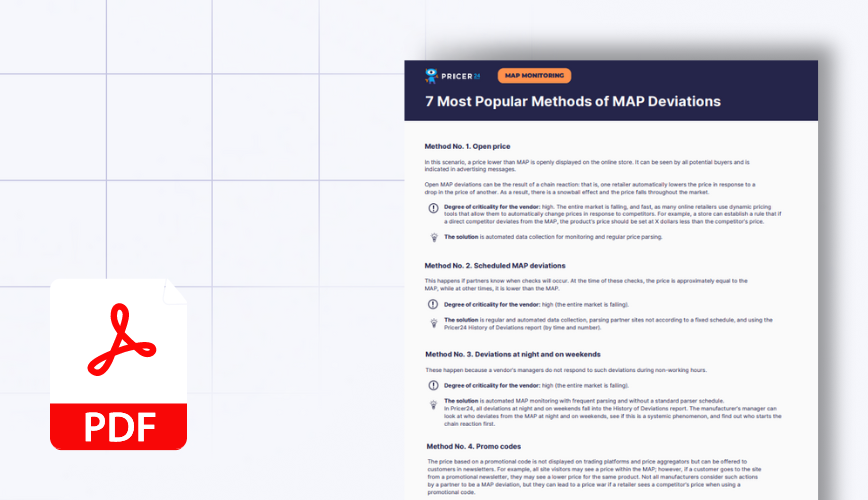Cost-plus pricing is one of the simplest strategies for setting prices on goods and services. It allows for easily calculating the minimum price that will cover all costs and ensure the desired profitability. However, despite its simplicity and clarity, the cost-plus pricing model has certain limitations, as it does not take into account changes in demand, competitor behavior, or customer price sensitivity.
This article explores the concept of cost-plus pricing, its benefits and drawbacks, and the types of businesses that can effectively use this strategy.
Contents:
What Is Cost-Plus Pricing?
Advantages of Cost-Plus Pricing
Disadvantages of Cost-Plus Pricing
Who Benefits from Cost-Based Pricing
Tips for Implementing a Cost-Plus Pricing Strategy
What Is Cost-Plus Pricing?
Cost-Plus Pricing Definition
Cost-plus pricing, or cost-based pricing, is a strategy where a certain fixed percentage markup is added to the cost of producing or purchasing a unit of a product. This determines the product’s retail price.
Cost-Plus Pricing Formula
The cost-plus pricing formula involves adding a markup to the cost of producing or purchasing a product. This ensures that all costs are covered and an acceptable level of profitability is achieved.
The cost-plus pricing formula is:
Retail Price = Cost × (1 + Markup)
Components of the Cost-Plus Pricing Formula
- Retail Price is the price at which a product or service is sold to customers.
- Cost is the total expenses incurred in producing or purchasing a product, including direct costs (materials and labor) and indirect costs (such as overhead).
- Markup is a fixed percentage added to the production or purchase cost to achieve profit, expressed as a decimal value: for example, 50% (0.5) or 75% (0.75).
Cost-Plus Pricing Example
Let’s imagine you need to calculate the retail price of a fitness tracker. Here are the production costs:
- Materials: $8
- Labor: $25
- Overhead: $13
The total cost amounts to $46. With a markup of 50%, the calculation will be as follows:
Retail Price = $46 × (1 + 0.5) = $69
Thus, one unit of the product should be sold at a price of $69.
Advantages of Cost-Plus Pricing
The main advantage of the cost-plus pricing model is its simplicity. You just analyze production costs, determine the desired markup, and get the retail price. This method is straightforward, which simplifies the pricing process for managers and accountants.
Additionally, cost-plus pricing ensures predictability, transparency, and flexibility in pricing.
Greater Pricing Certainty
Clear analysis of overhead, production, and purchase costs allows for avoiding underestimation or overestimation of goods, ensuring stability and predictability in pricing policies. Most importantly, this approach helps companies ensure that all costs are covered.
Pricing Transparency
The cost-plus approach allows for transparency and justifying price increases to the audience, which helps build trust in the brand. For example, if production costs increase, you can easily explain to your customers why the final product price has also increased.
Flexibility in Pricing Adjustments
Cost-based pricing allows a business to flexibly adjust the price in accordance with changes in production costs (raw materials, labor) or purchase costs (transportation and logistics expenses, customs duties).
Disadvantages of Cost-Plus Pricing
While cost-plus pricing may appear as reliable as an old calculator in accounting, this approach has its pitfalls. Let’s consider the main drawbacks and limitations.
Potential for Overhead Inflation
There is a risk that the company may not account for increases in production or purchase costs — for example, due to inflation in raw materials or electricity prices. If pricing is based solely on current costs without considering inflationary increases, it can lead to financial losses.
Ignoring Market Demand and Competitive Pricing
This method sets prices based only on the company’s internal costs, without considering consumer price sensitivity or competitors’ offerings. This can lead to situations where prices are too high for customers, reducing sales volumes, or too low, reducing potential profit. The consequence is a loss of market share and decreased profitability.
Risk of Ineffective Cost Management
Since this method does not incentivize companies to reduce costs and improve efficiency, there is a risk that costs will grow uncontrollably. Companies may believe that any increase in costs can simply be passed on to the customer by raising prices. This can lead to a loss of competitive advantage and a decrease in long-term profitability.
Who Benefits from Cost-Based Pricing
If you sell a product with inelastic demand, cost-based pricing can be a good option. For example, if you know that customers are loyal to the brand and are likely to continue buying products even after a price increase, cost-plus pricing will ensure the necessary sales volume and profitability.
Another example of the application of cost-plus pricing is retailers with low prices and a wide assortment, such as clothing or cosmetics stores. They often use different markup percentages for different product categories. This approach can also be applied in the raw materials and construction industries, where costs are relatively stable and easy to measure.
To make cost-plus pricing successful, you need to accurately calculate all types of costs, set an adequate markup percentage, and regularly monitor and adjust the strategy.
Cost-plus pricing is definitely not suitable for all companies. For example, technology products and services have an overall value to the customer that is much higher than the cost price. Therefore, for such industries, this pricing strategy may be impractical.
Cost-plus pricing is also not suitable for products with elastic demand. The interdependence of price changes and demand complicates the application of the cost-plus pricing model, as even a slight price increase can lead to a significant drop in sales.
Tips for Implementing a Cost-Plus Pricing Strategy
Accurately Determine All Costs
Without careful accounting of the entire structure of direct and indirect costs, the company will not be able to ensure relevant prices or achieve the desired profitability. It’s important to consider not only direct costs for materials and labor but also overhead costs: rent, utilities, administrative expenses, etc.
Tip: Use cost accounting systems and regularly review and update cost data to have current and accurate information.
Set an Adequate Markup
This is a key aspect of successfully implementing the cost-plus pricing strategy. When setting the markup, a company should consider not only the desired profitability but also market dynamics and the competitive environment. A high markup is good for business, but if competitors offer lower prices with the same quality and features, customers are likely to choose them over you.
Tip: To determine the optimal markup, analyze competitors’ prices, market demand, and sales prospects.
Remember: costs can change over time due to various factors, such as changes in raw materials prices or wage increases. The market environment can also change, affecting demand and competition. Conduct regular market analysis and competitor monitoring to understand how market changes can impact the effectiveness of your pricing strategy.
Conclusion
Cost-plus pricing determines the price of goods or services based on production costs. However, to successfully implement this strategy, it is also necessary to focus on external market factors and competitors’ actions to respond promptly to changes and maintain business stability and profitability.
FAQ
What industries commonly use cost-plus pricing?
This approach is most commonly used in niches where costs are relatively stable and easy to measure, such as manufacturing, construction, and consulting. In retail, cost-plus pricing is less frequently applied because the retail market is highly competitive and dynamic. However, there are situations and segments in retail where this method can be useful, such as selling self-produced goods.
How do you determine the cost in cost-plus pricing?
All types of costs related to the production and procurement of goods must be considered. These include direct costs (e.g., materials and labor) and indirect costs (e.g., overhead and administrative expenses).
What is the difference between cost-plus pricing and other pricing strategies like value-based pricing or competitive pricing?
Cost-plus pricing focuses solely on covering costs and achieving profit through a markup. Value-based pricing considers the value of the product from the customer’s perspective: how much customers are willing to pay for the product’s unique features and advantages. Competitor-based pricing involves considering the prices of competitors’ products when setting one’s own prices.
How often should I review and adjust my cost-plus pricing strategy?
To remain competitive and profitable, you should review costs and prices regularly. Depending on the niche and business dynamics, this could be quarterly or annually.
Is the cost-plus pricing strategy suitable for all businesses?
Despite its simplicity and transparency, cost-plus pricing is not suitable for businesses operating in highly competitive niches or industries where the structure and number of costs can change quickly or frequently. Before implementing this strategy, it is necessary to evaluate your business model and market dynamics.
Can cost-plus pricing be used for services as well as physical products?
Yes, cost-plus pricing can be applied to both goods and services.
How does cost-plus pricing impact profitability compared to other pricing strategies?
Cost-plus pricing ensures profitability by covering all costs and setting the necessary markup. However, it does not always optimize profitability compared to approaches that consider market demand and competitors’ prices.









